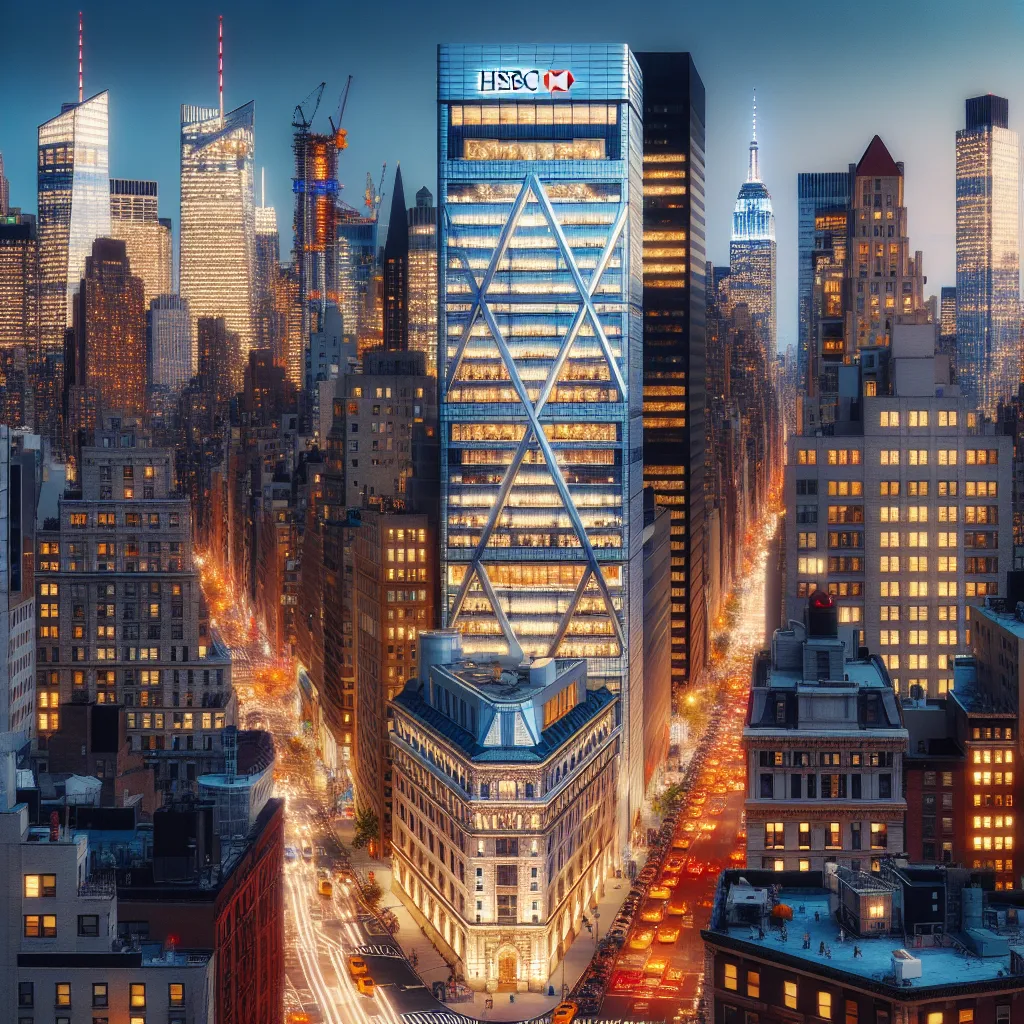Nestled in the heart of Manhattan, the HSBC Tower at 452 Fifth Avenue stands as a testament to architectural brilliance and historical significance. This iconic skyscraper, once the Republic National Bank Building, encapsulates the essence of New York City’s dynamic skyline. With its rich history and modern allure, the HSBC Tower offers a unique juxtaposition of past and present, making it a fascinating subject for architecture enthusiasts and history buffs alike.

A Glimpse into the Past
HSBC Tower holds a storied past that dates back to the early 20th century. Originally known as the Knox Building, it was a marvel of its time, showcasing the Beaux-Arts architectural style. This 10-story structure was designed by John H. Duncan and served as a commercial hub in Midtown Manhattan. As the city evolved, so did the building’s purpose and design, culminating in the construction of the 30-story HSBC Tower in the 1980s.
Architectural Evolution
The HSBC Tower’s transformation is a reflection of New York City’s ever-changing architectural landscape. The tower, completed in 1985, was designed by Attia & Perkins and features a modernist style with a distinctive glass facade. This design choice not only enhanced the building’s aesthetic appeal but also allowed it to seamlessly blend with the historic Knox Building at its base.
Key Architectural Features
- Height and Structure: The HSBC Tower stands at 400 feet, with 30 floors of office space. Its sleek glass facade wraps around the historic Knox Building, creating a harmonious blend of old and new.
- Interior Design: The tower boasts state-of-the-art office spaces, complete with modern amenities and advanced technological infrastructure. The interior design emphasizes functionality and elegance, catering to the needs of modern businesses.
The Role in New York’s Skyline
Situated at the southwest corner of Fifth Avenue and 40th Street, the HSBC Tower is more than just a building; it’s a landmark. Its strategic location offers breathtaking views of Bryant Park and the bustling cityscape. The tower’s presence is a reminder of New York’s rich history and its continuous pursuit of innovation.
Economic Impact
The HSBC Tower is not only an architectural gem but also a significant contributor to New York’s economy. As a hub for financial and commercial activities, it attracts businesses from around the globe. The tower’s prime location and state-of-the-art facilities make it an ideal choice for companies seeking prestige and convenience.
Impact on Real Estate
- Property Values: The presence of the HSBC Tower has positively influenced property values in the surrounding area. Its iconic status and prime location make adjacent properties highly desirable.
- Commercial Growth: The tower has spurred commercial growth in the vicinity, attracting a diverse range of businesses and boosting the local economy.
Preservation and Innovation
The HSBC Tower is a prime example of how preservation and innovation can coexist. While the tower embraces modern architectural trends, it also pays homage to its historical roots. The preservation of the Knox Building serves as a reminder of the site’s rich history, while the modern tower symbolizes progress and innovation.
Future Prospects
As New York City continues to evolve, the HSBC Tower remains a beacon of architectural excellence. Its ability to adapt to changing times while preserving its historical essence sets it apart from other skyscrapers. The tower’s future looks promising, with ongoing renovations and upgrades ensuring it remains a top choice for businesses and visitors alike.
Commitment to Sustainability
- Energy Efficiency: The HSBC Tower incorporates energy-efficient systems to minimize its environmental footprint. This commitment to sustainability aligns with New York City’s broader goals of reducing carbon emissions and promoting green building practices.
- Innovative Solutions: The tower’s management continuously explores innovative solutions to enhance its sustainability efforts, ensuring it remains at the forefront of eco-friendly architecture.
In conclusion, the HSBC Tower at 452 Fifth Avenue is more than just a building; it’s a symbol of New York City’s enduring spirit. Its rich history, architectural brilliance, and commitment to innovation make it a must-see landmark for anyone visiting the Big Apple. Whether you’re an architecture aficionado or simply curious about the city’s history, the HSBC Tower offers a captivating glimpse into the past, present, and future of one of the world’s most iconic cities.
hsbc tower
The HSBC Tower at 452 Fifth Avenue is a modernist office skyscraper in Manhattan, standing at 400 feet with 30 floors. Notable for its glass facade, it beautifully incorporates the historic Knox Building at its base, showcasing both architectural innovation and historical preservation.
Key Features:
- Height: 400 ft (121.9 m)
- Floors: 30
- Architect: Attia & Perkins
- Construction: Completed in 1985
Explore commercial spaces effectively with AnySqft—your go-to platform for real estate insights! Visit us at AnySqft to find your ideal space today!